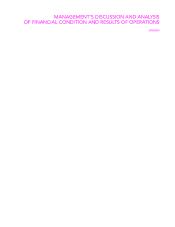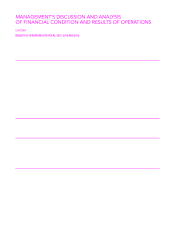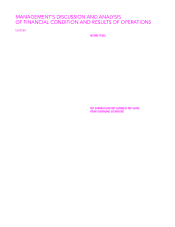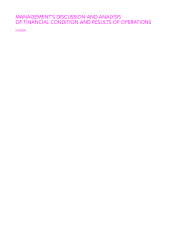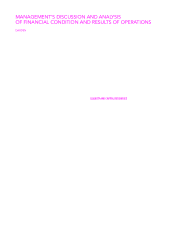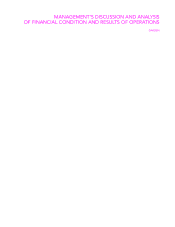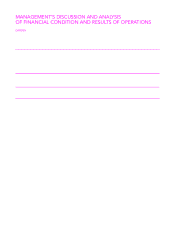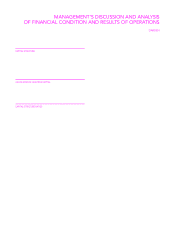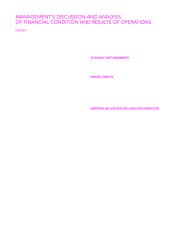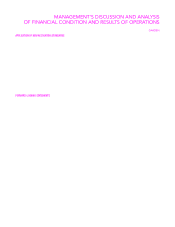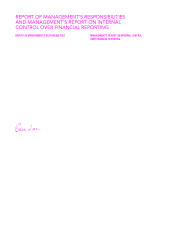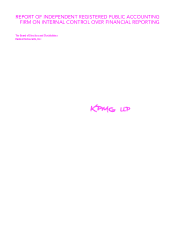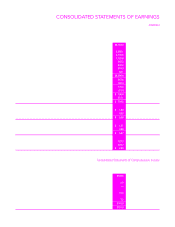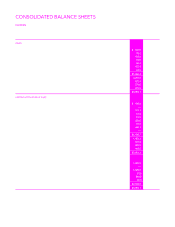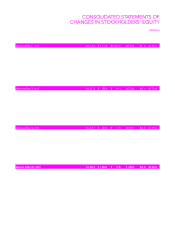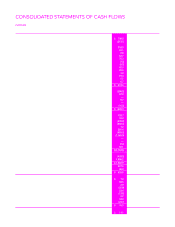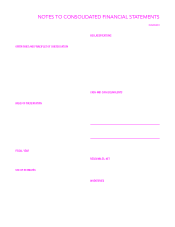Red Lobster 2015 Annual Report Download - page 25
Download and view the complete annual report
Please find page 25 of the 2015 Red Lobster annual report below. You can navigate through the pages in the report by either clicking on the pages listed below, or by using the keyword search tool below to find specific information within the annual report.
DARDEN RESTAURANTS, INC. | 2015 ANNUAL REPORT 21
MANAGEMENT’S DISCUSSION AND ANALYSIS
OF FINANCIAL CONDITION AND RESULTS OF OPERATIONS
DARDEN
Based on these ratios, we believe our financial condition is strong. The
composition of our capital structure is shown in the following table.
May 31, May 25,
(in millions, except ratios)
2015 2014
CAPITAL STRUCTURE
Short-term debt $ — $ 207.6
Current portion long-term debt 15.0 15.0
Long-term debt, excluding unamortized
discount and issuance costs 1,466.6 2,486.6
Capital lease obligations 54.5 54.3
Total debt $1,536.1 $2,763.5
Stockholders’ equity 2,333.5 2,156.9
Total capital $3,869.6 $4,920.4
CALCULATION OF ADJUSTED CAPITAL
Total debt $1,536.1 $2,763.5
Lease-debt equivalent 1,138.1 1,165.0
Guarantees 147.7 3.4
Adjusted debt $2,821.9 $3,931.9
Stockholders’ equity 2,333.5 2,156.9
Adjusted total capital $5,155.4 $6,088.8
CAPITAL STRUCTURE RATIOS
Debt to total capital ratio 40% 56%
Adjusted debt to adjusted total capital ratio 55% 65%
Net cash flows provided by operating activities from continuing operations
were $874.3 million, $555.4 million and $594.4 million in fiscal 2015, 2014
and 2013, respectively. Net cash flows provided by operating activities include
net earnings from continuing operations of $196.4 million, $183.2 million
and $237.3 million in fiscal 2015, 2014 and 2013, respectively. Net cash
flows provided by operating activities from continuing operations increased in
fiscal 2015 primarily due to higher net earnings, a reduction in current period
continuing operations income taxes paid and the timing of inventory purchases.
Net cash flows used in investing activities from continuing operations
were $235.1 million, $436.3 million and $1.11 billion in fiscal 2015, 2014
and 2013, respectively. Net cash flows used in investing activities from
continuing operations included capital expenditures incurred principally for
building new restaurants, remodeling existing restaurants, replacing equip-
ment, and technology initiatives. Capital expenditures related to continuing
operations were $296.5 million in fiscal 2015, compared to $414.8 million
in fiscal 2014 and $510.1 million in fiscal 2013. The decreasing trend of
expenditures from fiscal 2013 to fiscal 2015 results primarily from decreases
in remodel and new restaurant activity. Proceeds from the disposal of land,
buildings and equipment were $67.9 million, $4.4 million and $0.3 million,
in fiscal 2015, 2014 and 2013, respectively. In fiscal 2015, proceeds reflect
the impact of closed sale-leaseback transactions. Additionally, net cash used
in the acquisition of Yard House in fiscal 2013 was $577.4 million.
Net cash flows used in financing activities from continuing operations
were $1.78 billion in fiscal 2015, compared to $179.2 million in fiscal 2014
and net cash flows provided by financing activities from continuing operations
of $355.4 million in fiscal 2013. Including repurchase premiums and make-
whole provisions, cash used to repay long-term debt was $1.07 billion,
$0.0 million and $355.9 million in fiscal 2015, 2014 and 2013, respectively.
Net cash flows provided by financing activities from continuing operations
for fiscal 2013 also reflected $1.05 billion in proceeds from the issuance of
long-term debt. Net repayments of short-term debt were $207.6 million in
fiscal 2015 and $98.1 million in fiscal 2013 while net proceeds from the
issuance of short-term debt were $43.1 million in fiscal 2014. Net cash
flows used in financing activities included our repurchase of common stock
of $502.3 million, $0.5 million and $52.4 million in fiscal 2015, 2014 and
2013, respectively. As of May 31, 2015, our Board of Directors had authorized
us to repurchase up to 187.4 million shares of our common stock and a total
of 182.0 million shares had been repurchased under the authorization. The
repurchased common stock reduces stockholders’ equity. As of May 31, 2015,
our unused authorization was 5.4 million shares. We received proceeds
primarily from the issuance of common stock upon the exercise of stock
options of $159.7 million, $58.1 million and $64.4 million in fiscal 2015,
2014 and 2013, respectively. Net cash flows used in financing activities also
included dividends paid to stockholders of $278.9 million, $288.3 million and
$258.2 million in fiscal 2015, 2014 and 2013, respectively. In June 2015,
our Board of Directors approved a quarterly dividend of $0.55 per share
payable on August 3, 2015, which indicates an annual dividend of $2.20 per
share in fiscal 2016.
Our defined benefit and other postretirement benefit costs and liabilities
are determined using various actuarial assumptions and methodologies pre-
scribed under FASB ASC Topic 715, Compensation – Retirement Benefits
and Topic 712, Compensation – Nonretirement Postemployment Benefits.
We use certain assumptions including, but not limited to, the selection of a
discount rate, expected long-term rate of return on plan assets and expected
health care cost trend rates. We set the discount rate assumption annually for
each plan at its valuation date to reflect the yield of high-quality fixed-income
debt instruments, with lives that approximate the maturity of the plan benefits.
At May 31, 2015, our discount rate was 4.4 percent and 4.2 percent,
respectively, for our defined benefit and postretirement benefit plans. The
expected long-term rate of return on plan assets and health care cost trend
rates are based upon several factors, including our historical assumptions
compared with actual results, an analysis of current market conditions, asset
allocations and the views of leading financial advisers and economists. Our
expected long-term rate of return on plan assets for our defined benefit plan
was 7.0 percent for fiscal year 2015, 8.0 percent for fiscal year 2014 and
9.0 percent for fiscal year 2013. We made plan contributions of approximately
$0.4 million, $0.4 million and $2.4 million in fiscal years 2015, 2014 and
2013, respectively.


